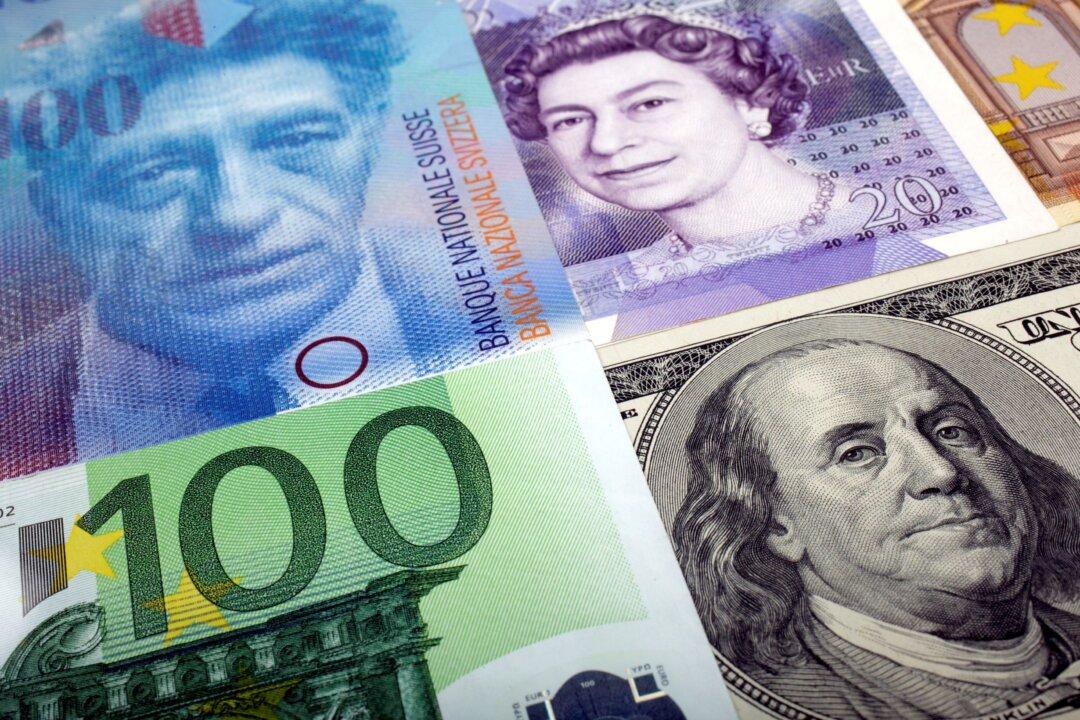LONDON—The euro, sterling, and Swedish crown rose against the U.S. dollar on Tuesday as traders assessed a slew of economic data, including UK and eurozone job figures plus German economic sentiment.
Sterling rose 0.6 percent to $1.1830, trading not far from a 2–1/2-month top at $1.1855 from Friday ahead of a tough government budget plan later this week and after data showing Britain’s unemployment rate unexpectedly rose and vacancies fell for a fifth report in a row as employers worried about the economy.





